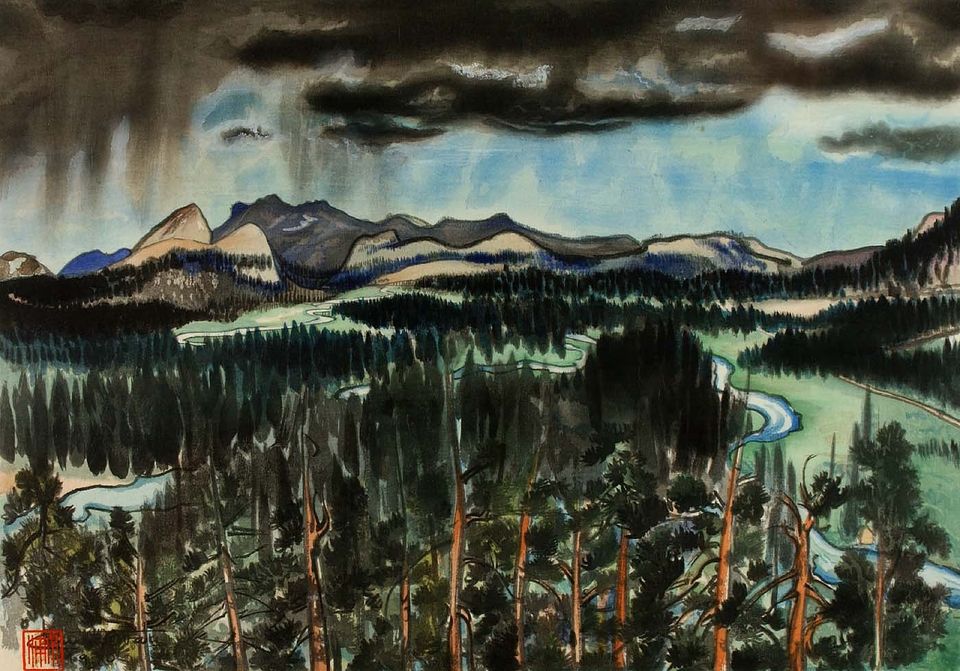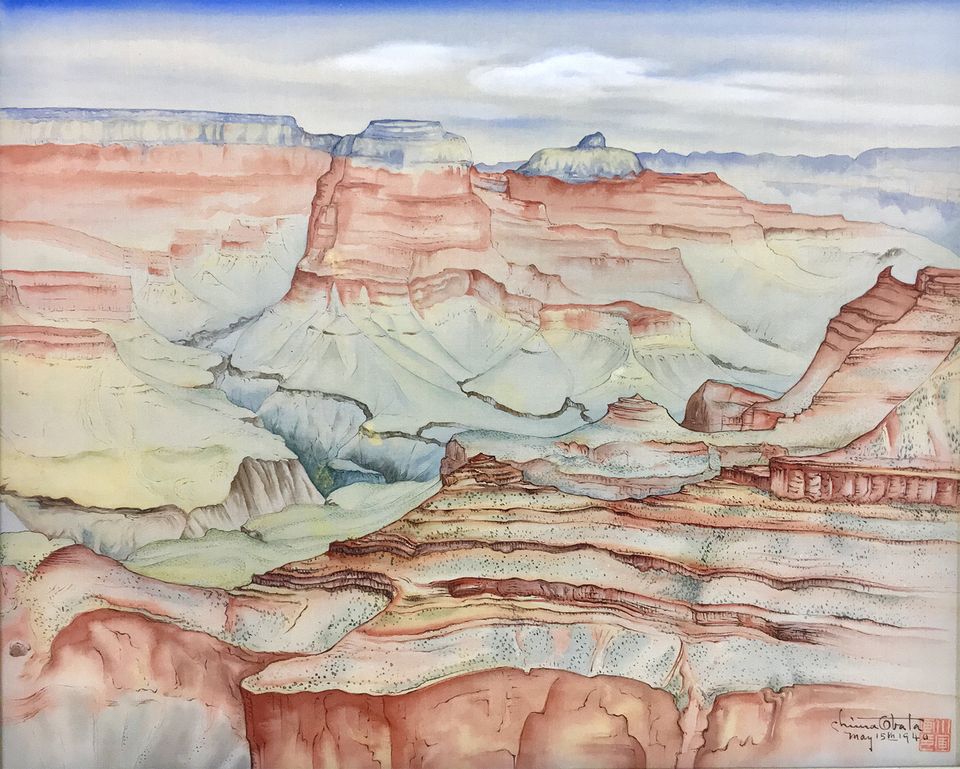Chiura Obata, Life and Death, Porcupine Flat, 1930, color woodcut on paper, image: 15 1⁄2 x 10 7⁄8 in. (39.4 x 27.6 cm), Smithsonian American Art Museum, Gift of the Obata Family, 2000.76.3, © 1989, Lillian Yuri Kodani
Copied
Artwork Details
- Title
- Life and Death, Porcupine Flat
- Artist
- Printer
- Date
- 1930
- Location
- Not on view
- Dimensions
- image: 15 1⁄2 x 10 7⁄8 in. (39.4 x 27.6 cm)
- Copyright
- © 1989, Lillian Yuri Kodani
- Credit Line
- Gift of the Obata Family
- Mediums Description
- color woodcut on paper
- Classifications
- Subjects
- Landscape — tree
- Landscape — California
- Allegory — life
- Allegory — death
- Landscape — park — Yosemite National Park
- Object Number
- 2000.76.3
Works by this artist (6 items)
Exhibitions
February 22, 2008–June 1, 2008
Between 1928 and 1930, while Obata was in Tokyo, he transformed these California landscape watercolors and sketches into a limited-edition portfolio titled World Landscape Series.
November 27, 2019–March 13, 2020
Japanese-born artist Chiura Obata’s seemingly effortless synthesis of different art traditions defies the usual division between “East” and “West.” This exhibition presents the most comprehensive survey of his rich and varied body of work to date, from bo















